The ports up and down the Eastern Seaboard are gearing up for a new age of offshore wind power. It’s an immense project that will over the next decade reshape the power for the entire corridor…and beyond.
A flurry of activity is taking place up and down the Eastern Seaboard. Old ports and new are being forged and formulated, prepped and repurposed. All are trying to take advantage of the soon-to-be explosive industry in offshore wind.
Most state governments demand some kind of local presence as a precondition for offshore wind development leases. This makes both political and economic sense as additional jobs and substantial development dollars stand as two of the biggest attractions of this new industry.
“To create good jobs, and create jobs for a greener industry, that is a big part of the policymaker’s mantra,” said Alexander Fløtre, vice president offshore wind at the research company Rystad Energy. “It’s part of why offshore wind is so popular, because it is a big industry.”
Fragmentation, however, can retard development. That’s especially so as suppliers still lack clarity on how much of a national marketplace they can count on. Fragmentation is “slowing the supply chain’s movement to the United States,” said Matt Smith, director of offshore wind business development at the Hampton Roads Alliance. “If we’re not functioning as one offshore wind market, but as a series of states that are competing. And that’s just the reality of it.”
The Business of Offshore Wind Power
So far, at least, there’s enough business to keep multiple ports busy, say even the most dispassionate and least boosterish independent analysts.
“We’re going to need all those ports and then probably we’re going to need a few more,” said Bruce Carlisle, managing director of offshore wind for the Massachusetts Clean Energy Center, a state economic development agency. “This entire enterprise is a maritime enterprise.”
However, some head-to-head competition has already emerged. In bids submitted late September for development of a third Massachusetts wind farm, both Vineyard Wind, the joint venture between Copenhagen Infrastructure Partners (CIP) and Avangrid Renewables, and Mayflower Wind, the joint venture between Shell and Ocean Wind, offered ports-related sweeteners. If Vineyard gets the nod, the port of Salem should gain business. If Mayflower prevails, Fall River will become an operations and maintenance port.
Some kind of specialization, either by geography or function, will eventually take hold. It’s unreasonable to think each state can host turbine-related manufacturing, or that a cable manufacturer will agree to set up shop in each of a dozen ports. There will be a kind of gravitational pull toward one function or another.
“The way the different states have dealt with their requirements and their goals from a clean energy initiative has set the table to have a very fractured kind of supply chain,” said Kerry Doyle, managing director of Tradepoint Atlantic, Maryland’s sprawling port and logistics complex. “We’ve seen that evolve and develop, and we’re encouraged by the fact that now you see states working with each other, [saying] ‘let’s put some rhyme and reason behind what we’re going to do, where and how we’re going to optimize the supply chain. We’re seeing some cohesiveness coming together. We need to see more of it in order for the developers to make serious capital commitments.”
“There will be requirements for different types of ports,” added John Henshaw, executive director of the Connecticut Port Authority. “Ports have different characteristics. You know, when you’ve seen one terminal, you’ve seen one terminal, as the old adage goes. Some have land available to them, some don’t. Some have proximity advantages, others don’t. If you look at the different types of ports, whether you’re talking about a marshaling port or a staging assembly port, a manufacturing port versus [operations and maintenance] port, they all will have different characteristics.”

Add to that the yet-unresolved issue of whether wind farm developers will rely on feeder barges bringing components to the offshore site and transferring them to installation vessels or purpose-built jack-up installation vessels steaming from port with components. These strategies have very different berthing needs.
Despite all these challenges, with the federal government now squarely behind wind power, developers and manufacturers alike should accelerate investment decisions, port officials believe.
“There’s been a bit of a wait-and-see approach from the developer community,” said Doyle. “But we’re certainly gaining momentum towards making capital decisions up and down the East Coast.”
East Coast Ports Offshore Wind Project Rundown
With so many offshore wind projects underway on the East Coast, it’s hard to keep track of each project but here’s a brief rundown of various East Coast ports now in the mix:
• Albany: Construction of an approximately $350 million wind components manufacturing complex is scheduled to break ground in the first quarter of 2022. The site, known as Beacon Island, is an 80-acre, long-vacant parcel of land in Bethlehem, just south of the Port of Albany.
In what Port of Albany CEO Richard Hendrick terms a “very aggressive construction and engineering schedule,” the manufacturing facility could start producing wind turbine towers by the end of 2023.
The project is a joint-venture between the port, wind tower manufacturers Marmen and Welcon and wind farm developer Equinor. Equinor holds two lease areas off New York, Empire Wind and Beacon Wind. Part of Equinor’s wind farm development proposal included the establishment of a manufacturing complex such as this.
The towers will be barged down the Hudson River to the wind farms.
The benefits to the port and to the surrounding communities are enormous, said Hendrick. The project will create some 350 permanent full-time jobs. And, said Hendrick, it could well attract ancillary manufacturers as well, such as ladders or wiring. “We will strive to add to that number of jobs exponentially as time goes on,” he said.
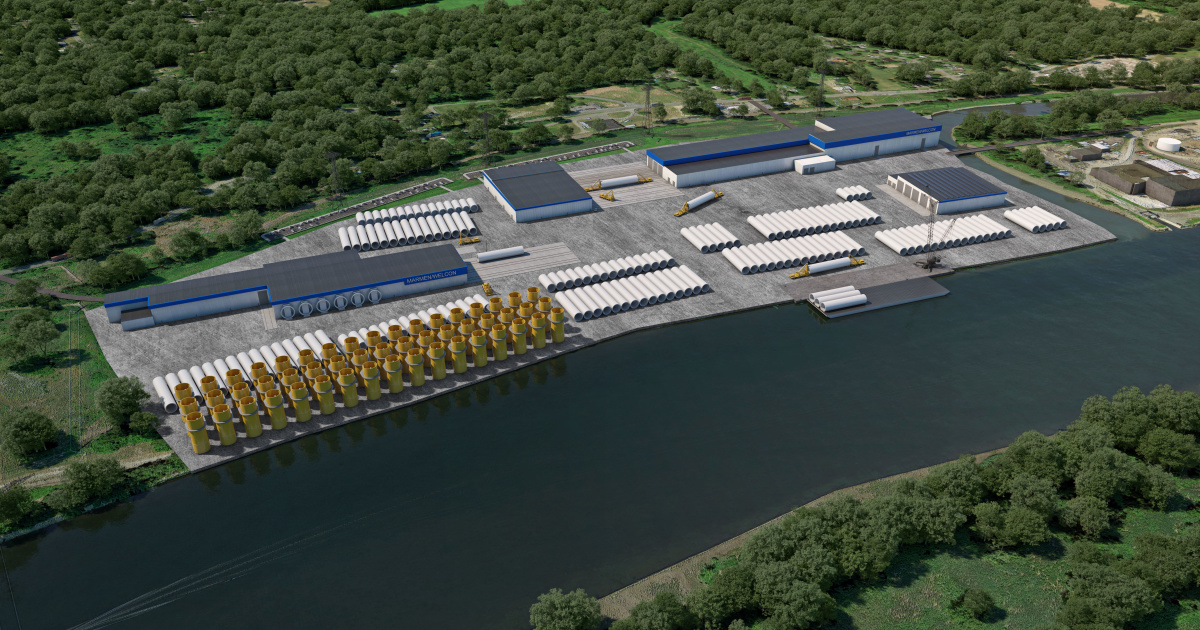
Plus, Hendrick believes, it could become a hub for onshore wind tower manufacturing as well, with barge, rail and truck links to the Midwest and the Gulf.
The development of the Beacon Island site adds some critical capabilities to the port as well. First, the wharf that will be built to accommodate the towers will be 6,000 pounds per square foot, five times stronger than any existing wharf in the port. Add to that 1,000 tons cranes capable of lifting the tower sections, which dwarf the two 124 tons and 145 tons mobile cranes now operating in the port.
All this gives the port heavy-lift capabilities it hasn’t had.
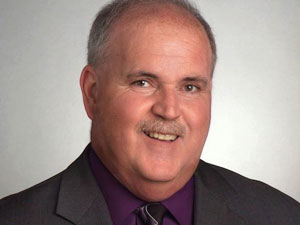
Brayton Point (MA): For decades, this site in Somerset, MA hosted New England’s largest coal-fired power plant. It was closed in 2017. The next year, Commercial Development Co. acquired the site, demolished the plant and fashioned a plan to service offshore wind through a redeveloped logistical and support center. Its expansive 300 acres of waterfront and an existing 34-foot, deepwater port provide incentives for the industry.
When the Trump administration held up offshore wind permitting, CDC turned to temporarily using the port to handle road salt and scrap metal, a stopgap measure that seemed to please no one.
However, the facility also contains a critical component of offshore wind development — a potential connection point with the existing power grid. Under a proposal submitted by Mayflower Wind, a high-voltage direct current cable would connect its wind farm to a converter station at Brayton Point. The proposal also provides an option for a battery storage facility, a $650 million project CDC previously announced with electricity transmission developer Anberic in 2019.
Brayton Point illustrates the potential for a variety of port facilities and the role specialization can play. However, it also shows the risks of speculative development.
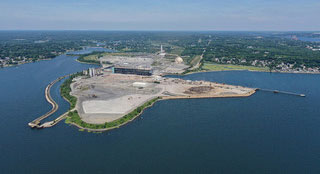
Fall River (MA): The Massachusetts Clean Energy Center is touting this old ironworks complex as another candidate for conversion to wind energy support. These aspirations were boosted in September, when Mayflower Wind sweetened its bid for new development rights off the Massachusetts coast by tagging Fall River as an operations and maintenance base.
The parcel, now called the Borden & Remington complex after its current chemicals manufacturing owners, is relatively small at 37 acres, and is squeezed by existing buildings. It also must deal with height restrictions from the Mount Hope Bay bridge. However, a Clean Energy Center study estimated minimal costs of less than $5 million to convert part of the complex to wind-related O&M, and another $9 million for cables-related usage.
Hampton Roads (VA): Over the past two decades, the State of Virginia has plowed hundreds of millions of dollars into the Port of Virginia complex at Hampton Roads, one of the most extensive maritime developments in the US. Two of the three terminals were developed as container terminals, while the 270-acres Portsmouth Marine Terminal more recently has been earmarked, massaged and bolstered to accommodate offshore wind.
It is “one of the most ready and significant terminal properties for offshore wind, both installation and manufacturing, on the East Coast,” claimed Matt Smith, director of offshore wind business development at the Hampton Roads Alliance.
In August, Dominion Energy announced it would lease 72 acres of the terminal. Dominion is heading the Coastal Virginia Offshore Wind project that is scheduled to start construction in 2024. When finished in 2026, it will generate 2.64GW of energy. Dominion said the Portsmouth Terminal will be used for staging and pre-assembly. It will also likely become the installation, operations and maintenance center for the project.
Hampton Roads hopes as well that Portsmouth will become home base for the Kitty Hawk Offshore wind project, a 2.5GW development that will take place sometime around 2025 southeast of Hampton Roads, in waters off North Carolina’s Outer Banks.
Dominion also is financing a new purpose-built installation vessel, the only one so far that will be Jones Act compliant. It will be based at Hampton Roads. This “can lend itself to Hampton Roads becoming one of the logistics and vessel bases overall on the East Coast for the offshore wind industry,” said Smith, who adds that it could also become a magnet for “other companies that are typically working now on the Gulf Coast offshore oil and gas industry, which are looking to position assets on the East Coast to serve the offshore wind industry.”
Hampton Roads offers multimodal access to two class 1 rail: Norfolk Southern and CSX. Smith adds an experienced maritime workforce as another advantage in attracting business. And, he said, the state hosts a large military presence, thousands of whom are transitioning out and can supply technical savvy and expertise.
In addition to the Portsmouth Terminal, Hampton Roads also boasts another facility for use in offshore wind — the 123-acres Lambert’s Point Docks. This breakbulk marine terminal is directly across the Elizabeth River from Portsmouth. “Both have large land area, deep water access and no air draft restrictions,” said Smith.
New Bedford: In the annals of US offshore wind terminals, the 29-acre Port of New Bedford Marine Commerce Terminal is a pioneer. It signed its first offshore wind-related lease in September 2018 with Vineyard Wind 1, the 800MW wind farm in federal waters south of Martha’s Vineyard. This followed a $113 million heavy-lift terminal rehab and superfund cleanup, with construction that began in 2013. (It was originally planned to service the doomed Cape Wind wind farm.) The Vineyard Wind project languished during the Trump administration. It wasn’t until this past May that the Biden administration signed off.
The terminal renegotiated the lease, which will now commence January 1, 2023 and extend for two years. That will be followed by a similar lease for the 800MW Mayflower Wind project, a lease that will begin January 1, 2025.
“We are occupied until almost 2028,” said Bruce Carlisle, managing director of offshore wind for the Massachusetts Clean Energy Center. “We feel great about the Commonwealth’s early investment in the terminal. That is demonstrated by our position in the market right now.”
New Bedford, however, has some limitations, including space, which would rule out any component manufacturing or large-scale assembly.
It also has a hurricane barrier, which would rule out the berthing of a wind turbine installation vessel. The port will instead focus on hosting feeder barges, which Carlisle, for one, touts as a more realistic alternative for much of the upcoming installation activities. “Barges will be cheaper to manufacture than wind-turbine installation vessels and you’ll be able to access more ports,” Carlisle said. “Feeder barges will be a critical ingredient to the US offshore wind market and deployment strategy.”
New Jersey Wind Port (Lower Alloways Creek Township): Construction should begin soon on an offshore wind specialty port the State of New Jersey is building from scratch on the east bank of the Delaware River, downriver from Philadelphia and Wilmington. The port’s first phase will encompass some 60 acres, evenly divided between a marshaling yard and manufacturing center. It is scheduled to be operational the first quarter of 2024. The second phase should begin construction sometime in 2024, with an online target of 2026. The entire site is 200 acres.
As a greenfield site, the project is unique, as is the fact that the state is picking up the entire $300 to $400 million tab for the first phase.
“There was a shortfall in supply and we believe that only government was really placed to get this thing going in time to potentially service the first wave of projects,” said Jonathan Kennedy, New Jersey Economic Development’s managing director, infrastructure. “There was a speed-to-market benefit by doing it this way.”
The existing container port in Elizabeth wasn’t an option for two reasons: Lack of space and height and weight restrictions. And, said Kennedy, developing a new port gives the operation the advantage of enabling component manufacturing side-by-side with marshaling. “These manufacturers can effectively just wheel their components out of the factory door onto the vessels, saving millions of dollars in logistics costs,” said Kennedy.
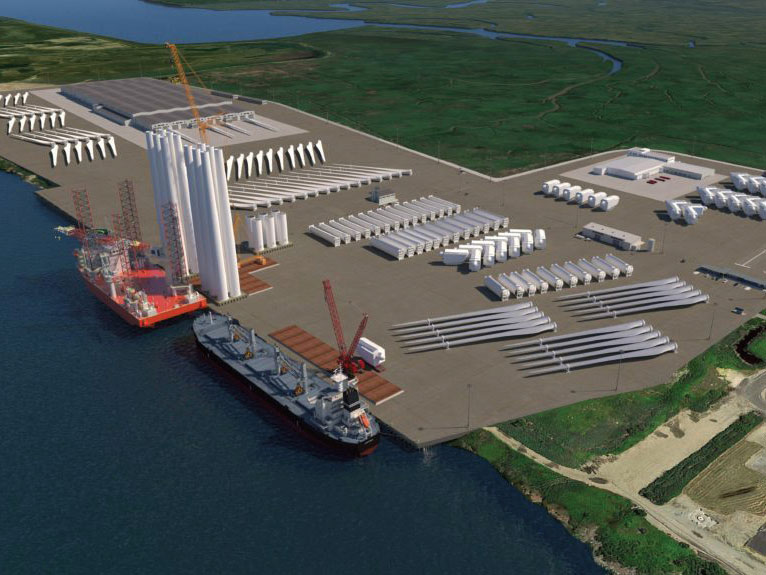
The development authority will own the port, but doesn’t envision managing it, said Kennedy.
The port wants to first host Ocean Wind 1, a 1.1GW farm that Ørsted will develop off the coast of Southern New Jersey in a joint venture with energy provider PSEG. Its 2024 production timetable is extremely tight for the new port, however.
“We would like to be up and running in time for New Jersey’s first project. Should that developer decide to marshal from New Jersey, we’d like to give them the option,” said Kennedy. “If that doesn’t happen, we believe there are other projects out there looking for a home, looking for a place to marshal from.”
In June, Ørsted got the nod for Ocean Wind 2 development as well, a 1.148GW project adjacent to Ocean Wind 1. At the same time, the state’s public utilities board awarded the 1.51GW Atlantic Shores wind farm to an EDF/Shell consortium.
In addition to Ørsted and Atlantic Shores, an Equinor-bp joint venture also submitted a non-binding bid for space at the port designated for turbines marshaling and staging. That joint venture will develop the 1.23GW Beacon Wind 1 project in New York state waters.
Both Ocean Wind 2 and Atlantic Shores contracts call for nacelle manufacturing to take place in the wind port. Ørsted said it will work with GE, while the EDF/Shell venture said it would tap Vestas. The economic development authority just announced that in addition to GE and Vestas, Siemens Gamesa has also tendered a non-binding bid to lease one of two large parcels at the proposed port, suitable for nacelle manufacturing.
The port is being designed “as a regional hub,” said Kennedy, and not just to service New Jersey’s needs.
New London: This past spring, construction began on a $235 million redevelopment of the city’s State Pier to accommodate several offshore wind projects. A public-private partnership links offshore wind developer Ørsted, energy provider Eversource, terminal operator Gateway Terminal and the State of Connecticut. Under the arrangement, Ørsted and Eversource will sublease space from Gateway.
The port will initially support three nearby wind farms: South Fork, Revolution and Sunrise, which will combine for more than 1.7GW worth of electricity. The three are located in the waters off Long Island. South Fork, the smallest of the three, is scheduled to begin production in 2023. That’s extremely soon, by offshore wind standards.
To develop South Fork, New London will temporarily host the first Jones Act qualified vessel built specifically for offshore wind construction, as the Ørsted-Eversource joint venture will charter the Charybdis from owner Dominion Energy.
Unobstructed access to the sites represents one big advantage of the terminal, said John Henshaw, executive director of the Connecticut Port Authority.
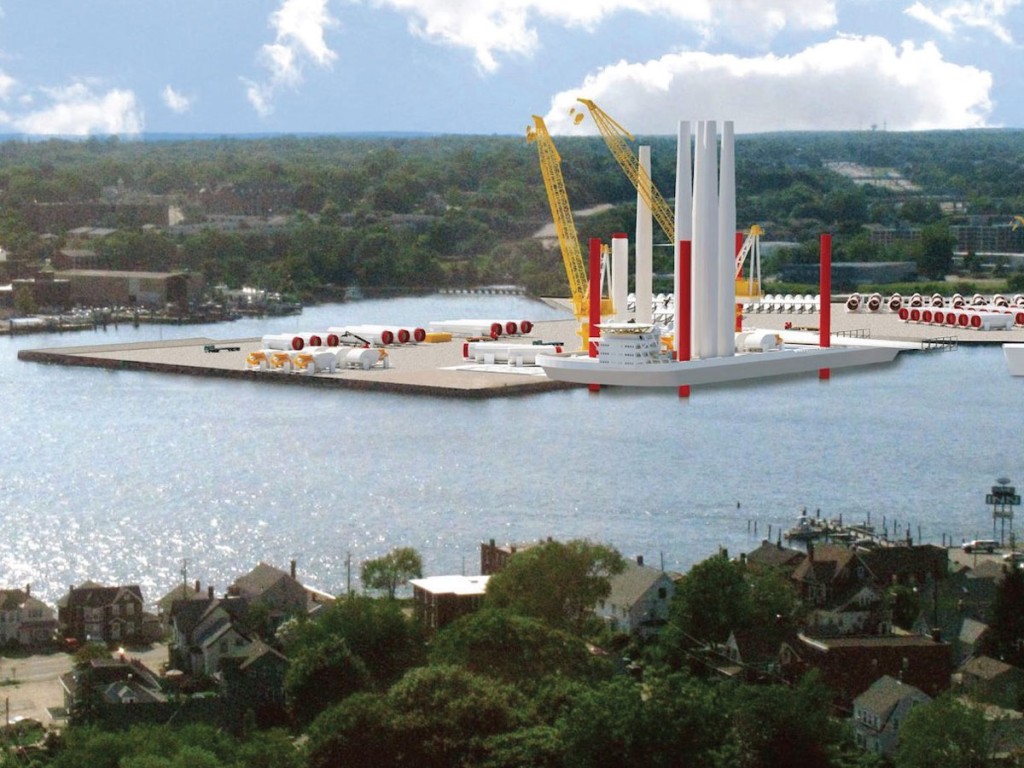
ProvPort: In April, partners Ørsted and Eversource announced that the Port of Providence will host a manufacturing plant that will fabricate foundation platforms. The $24 million fabrication facility will potentially source wind farms off the coast of Rhode Island, Connecticut and New York.
Quonset/Davisville (RI): When Deepwater Wind developed Block Island, this country’s first offshore wind project, it marshaled materials at Rhode Island’s 3,000-acres Quonset Business Park and berthed installation vessels inside the park at the Port of Davisville, which itself is a sprawling 250 acres and has already emerged as one of the country’s preeminent auto ports.
Ørsted has signed a port use agreement for both its South Fork and Revolution Wind projects, although how it will be divided between Davisville and New London remains to be seen.
What’s more, Eversource and Ørsted have proposed building a new substation in the park. That will connect the Revolution Wind complex to the grid, with two undersea cables from the wind farm coming ashore at the port. The 700MW Revolution project, 400MW of which will be destined for Rhode Island, is scheduled to be operational by 2025.
Rhode Island authorities hope more will come. “There is going to be a long line of supply chain partners, either contractors, subcontractors or suppliers,” said Steven King, managing director of Quonset Development Corp., the quasi-state agency charged with developing and managing the complex. “We will have an opportunity to compete for a lot of these supply chain opportunities,” he said, citing a recently signed lease with an unnamed producer of survival gear.
Quonset offers several advantages, King said, including proximity to the offshore farms, ample land and wind farm-related experience. The Davisville port is beginning a $234.5 million redevelopment master plan, which includes dredging, a new terminal and pier extension and modernization.
King also touted Quonset’s multi-modal transportation facilities. For one, some 14 miles of rail track traverse the park. Quonset also boasts of an airport, which can be used for ferrying to and from the wind farm construction sites.
• Salem (MA): This is one of the most tentative of all port projects, as the Salem wind port is wholly dependent on Vineyard Wind winning the Commonwealth wind farm, now being evaluated by Massachusetts state. Vineyard and Mayflower both bid on the project, which could add as much as 1.6GW. Massachusetts state is evaluating the bids, which were submitted at the end of September. A decision could come by the end of this year.
Under its proposal, Crowley Maritime Corp. would own, operate and develop the 42-acres facility, with Vineyard as the anchor tenant. The site is now brownfield, vacant land next to an old coal-fired power plant. The plan calls for wind farm marshaling and fabrication. Vineyard said it would add 400 full-time jobs. Recently, Crowley hired Evan Matthews, who previously headed the Port of Davisville during the early days of the Block Island wind farm project, as their Director of Offshore Wind Operations. In October, Crowley announced it was opening an Offshore Wind Office in Providence, Rhode Island.
“For Vineyard to be able to go to the state and say, ‘look, if we win, we’re going to open up another port area. We already are in New Bedford, we’re going to go to Salem,’ it really puts them in a strategic position to win this next lease area,” said Jeff Andreini, Crowley’s vice president new energy.
When asked what would happen if Vineyard didn’t win the contract, Andreini demurred. “There are a few unknowns that I can’t talk about at the moment,” he said.
• South Jersey: New Jersey is going all in on offshore wind-related port facilities. In addition to the purpose-built wind port near Salem, the state is touting a number of other existing ports to service wind.
“We’re looking at a whole series of ports as part of the logistics chain on the Delaware River,” said Brendan Dugan, business development director at South Jersey Port Corp. “That could include the wind port, but also complement what’s happening in the wind port.”
Notably, the Port of Paulsboro Marine Terminal will host a $250 million monopile manufacturing plant that pipe manufacturer EEW is building to service the 1.1GW Ocean Wind project. Ground was broken in April, with construction expected to be completed by the end of 2023.
The corporation has plans as well to redevelop the Port of Salem itself, just eight miles from Lower Alloways Creek, as a kind of materials feeder facility to the Wind Port. Work will include reconstructing and lengthening the wharf. According to Dugan, Salem has a rail connection that the new purpose-built port won’t have. This connection would allow, for example, steel plates to be railed to Salem, assembled into towers, then floated by barge to the Wind Port for final assembly.
According to Dugan, his corporation has fielded requests of interest in two terminals in Camden for possible wind turbine components handling as well as bulk aggregate that will be used for anchoring the towers.
• Tradepoint Atlantic (MD): In August, Renexia SpA, the Italian parent company of wind developer US Wind, announced it would lease an old 90-acres shipyard in Baltimore’s mammoth Tradepoint Atlantic logistics center to manufacture the towering steel structures that support offshore wind turbines.
Officials and others immediately crowed that steelworkers will once again trek to a site that for decades was the domain of Bethlehem Steel and was once the largest steel plant in the world. “Steel is back,” said Kerry Doyle, Tradepoint Atlantic managing director.
In addition to nabbing such an important anchor as Renexia, Tradepoint Atlantic believes it can attract ancillary manufacturers as well because its facilities are already there. “When developers and OEMs are thinking about their supply chain and establishing facilities, the fact that today we could move offshore wind components and stage, store and assemble and we’re ready to go, that’s a big selling point,” said Doyle. “You can’t leave anything to chance when you’re talking about billions and billions of dollars of investment in offshore wind development.”
What is now dubbed Sparrow Point Steel vaults Tradepoint Atlantic into a lead position among quayside facilities along the Atlantic coast that hope to capitalize on the fabricating and assembly side of offshore wind. Like Hampton Yards, Tradepoint Atlantic large footprint allows it to combine manufacturing with staging and operations as well.
Tradepoint Atlantic will host US Wind’s MarWin offshore wind, a 270MW project 17 miles off the Maryland coast. US Wind has said it will sink some $77 million into the initial deployment hub, with a promise of more should it win the bid to develop the much larger 1.2GW Momentum Wind, also off the Maryland coast.
Tradepoint Atlantic is a 3,200 acres complex on the old Bethlehem Steel site that an investment group including Doyle acquired in 2014 for conversion into an intermodal logistics hub. It already hosts such large companies as VW, BMW and Home Depot. The complex offers both lift-on, lift-off and roll-on, roll-off capabilities, said Doyle.
Support of offshore wind was part of the master plan, said Doyle. “We’ve conceptualized it and we’ve committed to it and we’ve supported it,” he said.





